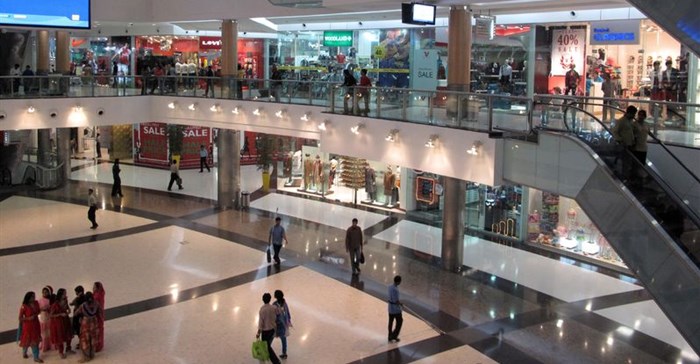This year could prove to be a tough year for retailers, with real retail sales growth expected to underperform economic growth. Retail sales growth tends to be more cyclical than overall economic growth, outperforming the latter in good times, but often underperforming economic growth in tougher times.
From 2010 to 2016, retail has had a good run, outperforming economic growth. However, we do not bargain on this continuing in 2017. An expected period of retail ‘underperformance’ could usher in a slowing in retail property capital growth to a rate where it is negative in real terms, implying some ‘correction’.

© Zvonimir Atletic via
123RFIt has been a good growth period for retailers for much of the time since the end of the recession in mid-2009. Each year from 2010 to 2015, real retail sales growth has noticeably exceeded real economic growth and, with one month’s data left to be released, it would appear that 2016 as a whole was another such year.
However, the steady slowing in monthly real retail sales growth late last year, all the way from 4.3% year-on-year as at December 2015 to a -0.2% decline as at October 2016, suggests a likely weak start to 2017 and a possible tough year for retailers.
Looking back to 2010, a sharp recovery in household consumption expenditure, driven by an aggressive bout of interest rate cutting by the South African Reserve Bank, along with an economic recovery around that time, saw real retail sales growth rise sharply from -3.1% decline in 2009 to +5.6% in 2010, and on to a post-recession peak of +6.2% in 2011.
Then, more recently in 2015, the sector had a mild boost to growth from a significant dip in Consumer and Retail Price Inflation in that year, sustaining its outperformance of economic growth. That dip passed on, and the economy ‘re-inflated’ in 2016, while interest rates had been rising through 2014 to early-2016.
Domestic wage bill growth not sustainable
Interest rates and inflation aside, key to the strong post-2009 consumer and retail period was household sector real disposable income growth well exceeding real GDP growth. Interest rate reductions were one key reason for disposable income growth outperforming economic growth. However, the other was a domestic wage bill whose growth outpaced that of nominal GDP, thus raising the wage bill’s share of GDP from 42.3% in 2007 to 47.4% by 2016.
The wage bill’s rising share of GDP has lowered the economy-wide gross operating surplus (GOS), which can point to pressures on commercial sector profitability. We believe it unlikely that such wage bill growth outperformance can continue, private sector having to remain profitable, and government having to trim its own wage bill growth if it is to arrest the multi-year rise in its debt burden.
This is expected to translate into weak employment creation in 2017 and even the possibility of some further near term employment loss.
Such periods of weak employment creation can dampen consumer confidence and promote a more conservative consumer, reluctant to borrow aggressively and possibly even attempting to save a bit more.
More tax revenue
In addition, the Minister of Finance remains on the hunt for more tax revenue, as a weak economy puts government tax revenue growth under pressure and there is a likelihood that the effective personal tax rates on individuals will rise further this year.
Interest rates in 2017 are expected to be neutral for retailers this year, forecast to remain unchanged through the entire year.
One positive factor is expected to be a mild decline in consumer price inflation, with slowing food price inflation expected to be a key driver of this. However, this is not expected to offset the near term constraining factors.
Periods where real retail sales growth underperforms real economic growth are not uncommon. Retail sales have over the years been more cyclical than economic growth, underperforming economic growth for a number of years from the 1990s to 2002, then dramatically outperforming economic growth in the consumer boom years from 2003 to 2007, underperforming once again in that period of economic weakness of 2008 and 2009, before returning to outperformance from 2010 to 2016.
Underperformance period may be at hand
We now believe that the next period of underperformance may be at hand, as perhaps signalled by very weak monthly retail sales figures late in 2016.
This is not to say that the expectation of mildly improved economic growth to around 1% in 2017 (from near zero in 2016), and on to 1.6% in 2018 will not bring any retail recovery. Later in 2017, we would indeed expect some turn for the better for retail growth too. We expect that it would be too late to prevent a slower 0.6% growth rate in real retail sales for 2017, as a whole (after an expected solid 2.2% number for 2016 as a whole), thereafter turning up slightly to 0.7% in 2018 and 1.4% in 2019.
For retail shopping centres, this could be expected to lift vacancy rates and we expect it to usher in a period where retail property capital growth (using MSCI/IPD historic data, which is net of capital expenditure on property) slows to low single digit rates between 3-4% in 2017 and 2018. This would translate into some retail property ‘correction’ in real terms, as such rates are expected to be below general economy-wide inflation as measured by key measures such as CPI or GDP inflation.















































